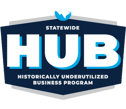The mission of USP <800> is to “protect healthcare workers from unintentional exposure to drugs that are hazardous.” And the extensive list of guidelines and requirements covers a lot of ground, but should your healthcare system go further to fully protect your personnel from the harmful and sometimes deadly effects of hazardous drug exposure?
Despite USP <800>’s focus on hazardous drug exposure prevention, there are several potential areas for exposure not covered in guidelines. With more than 8 million healthcare workers exposed to hazardous drugs each year, according to the CDC, the more layers of protection and prevention healthcare systems provide, the better the outcome for such a substantial group of people.
Be prepared to document handling instructions for ALL drugs - whether they are formulary or not. While creating a formal Assessment of Risk (AoR) for every drug is not a USP <800> requirement, certainly assessing each drug's hazardous potential and providing handling guidelines for everyone that may come in contact with that drug is. If you see that the potential for risk is minimal at your facility, then consider a formal AoR, which allows you to create specific handling guidelines for that drug based on your assessment. These steps will ensure that your health system meets the USP <800> requirements and can significantly improve the safety and well-being of healthcare workers by communicating risks and handling information for all drugs.
Are you referencing the NIOSH 2016 or NIOSH 2020 list of hazardous drugs? Both lists are still acceptable by inspectors but do either list fully cover the hazardous drugs in your healthcare system? The FDA list of newly approved drugs grows each month, but NIOSH doesn’t stay up-to-date with all the latest. Even then, not all new drugs may be classified as “hazardous” while still proving dangerous to healthcare workers. It is on you to thoroughly examine the drugs used within your system and whether or not they are categorized by NIOSH as such.
Drugs don’t always enter a healthcare system through the expected route of receiving in the system’s clinical pharmacy. When they enter your facility, many patients bring outside medications such as estrogen supplements and even investigational drugs that aren't yet FDA-approved. These situations can expose clinicians and nurses to drugs they don’t typically interact with. These drugs aren’t even typically listed within the formulary so how do you handle these situations?
One final possible gap in your safe handling instruction communication is disposal information. USP <800> doesn’t require the documentation and communication of disposal safety information, leaving that up to the EPA and other federal, local and state regulations; however, waste removal is a potential area for hazardous drug exposure. By including this information, you’ve gone another extra step to ensure the safety and well-being of all healthcare workers in your facility.
How do you best communicate safety information to everyone who is potentially exposed to hazardous drugs? Many rely on spreadsheets housed on the intranet, which are both tedious to maintain and access. Still, others haven’t even reached the digital age and document hazardous drug handling information in physical binders.
If the USP <800> requirements are already overwhelming, number 1, you’re not alone, but also there is a better way. A cloud-based platform accessible by all healthcare workers where and when they work with hazardous drugs. By communicating through both text and visuals, these solutions also go the extra step towards true healthcare worker safety.
If you’d like to know more about Rpharmy’s Rhazdrugs hazardous drugs safety platform, check out this quick video.


